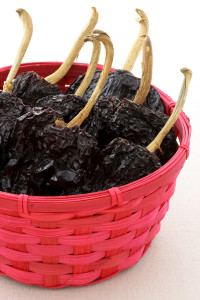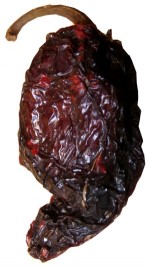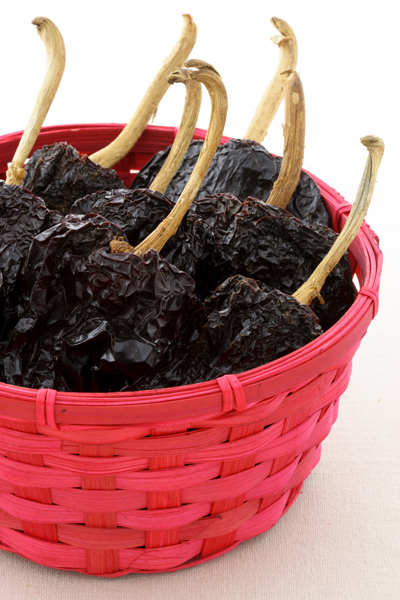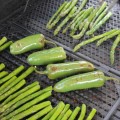Many varieties of pepper pods can be smoked to preserve them. The most commonly smoked is the jalapeno, which is generally considered too fleshy to be dried. Smoked Jalapenos are called chipotles.
The Mexicans use a large pit with a rack to smoke-dry Jalapenos. The pit containing the source of heat is partially underground with a tunnel leading to the rack. The pods are placed on top of the rack where drafts of air pull the smoke up and over the pods. The jalapeho pods can be left whole or seeded. The latter, more expensive, are called capones, or castrated ones.
It is possible to make chipotles in the backyard with a meat smoker or Weber-type barbecue with a lid. The grill should be washed to remove any particles of meat because any odor in the barbecue will give the pods an undesirable flavor. Ideally, the smoker or barbecue should be new and dedicated to smoking peppers.

The quality of homemade chipotle will depend on the maturity and quality o f the pods, the moisture in the pods, the temperature of the smoke drying the pods, and the amount of time the peppers are exposed to the smoke and heat. The aroma of wood smoke will flavor the Jalapenos, so choose carefully what is to be burned. Branches from fruit trees, or other hardwoods such as hickory, oak, and pecan work superbly. Pecan is used extensively in parts of Mexico and in southern New Mexico to flavor chipotles. Do not be afraid to experiment with different woods.
The difference between the fresh weight of the peppers and the finished product is about ten to one, so it takes ten pounds of fresh Jalapenos to produce approximately one pound of chipotles. A pound of chipotles goes a long way: A single pod is usually enough to flavor a dish.

Other varieties of smoked jalapeños are often mistaken for the típico chipotle. The most common one is called Morita, shown here.
Check the pods and the fires hourly and move the pods around, always keeping them away from the fires. It may take up to forty eight hours to dry the pods completely. The pods will be hard, light
in weight, and brown in color when dried. If necessary, let the fires burn through the night. After the pods have dried, remove them from the grill and let them cool. To preserve their flavor, place them in a self-locking plastic bag. Store them in a cool, dry place. If kept dry, the chipotles will last for between twelve and twenty-four months.
Editor’s Note: The Pepper Garden by Dave DeWitt and Paul W. Bosland is an excellent seed-to-harvest guide to growing chile peppers at home. This piece is just a sample of the treasure you’ll find in it. Get a copy here.
Latest posts by Mark Masker (see all)
- 2024 Scovie Awards Call for Entries - 07/07/2023
- 2024 Scovie Awards Early Bird Special: 3 Days Left - 06/29/2023
- 2024 Scovie Awards Early Bird Deadline Looms - 06/25/2023










